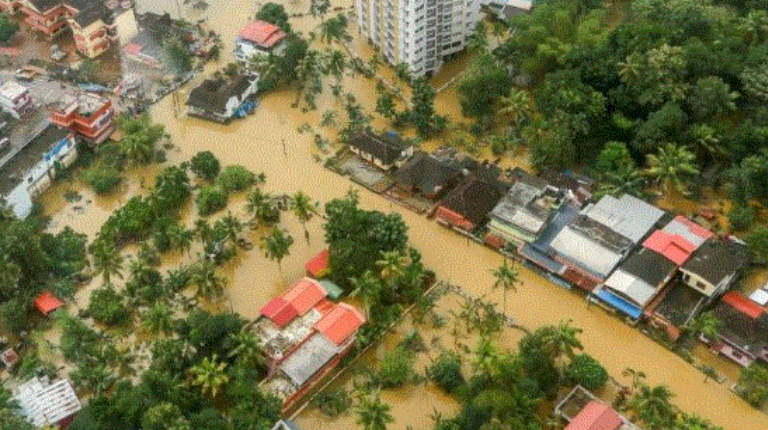Due to the pressures of increasing population, pollution and climate change, safe water is becoming a scarce resource. There are also problems such as poor management of water sources, contaminated supplies, leaky distribution networks etc. In such a scenario, water quality/ quantity monitoring, water recycling and water use optimization becomes utmost important as measures to ensure water safety and availability. Optimization of water use essentially converges modern methods for real time water quality monitoring, recycling and reuse at all points of consumption besides addressing leakages and distribution losses.
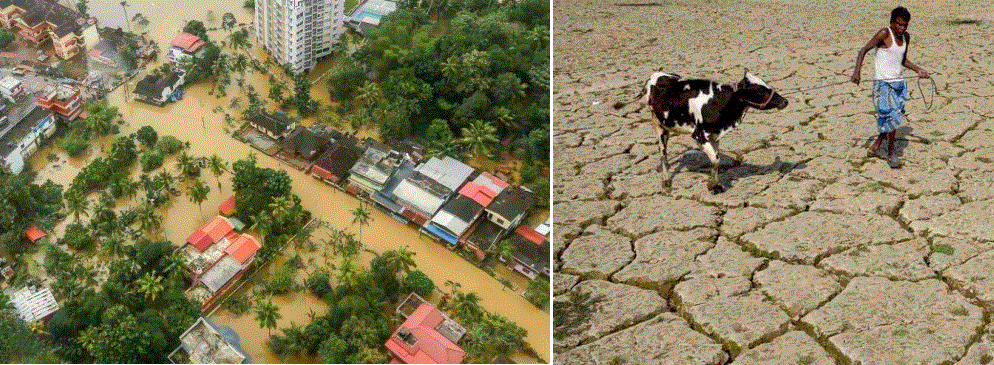
The flood disasters in the southern and northern states of India-in Kerala and Uttarakhand caused by the belated South West Monsoon 2021 is still making heavy toll on the lives and assets of people (though the meteorological department did announce the exit of the monsoon!).
Strangely enough, it was only in August 2021, over a fifth of India’s land area (21.06 per cent) had been facing drought-like conditions, according to the report published by Drought Early Warning System (DEWS), a real-time drought-monitoring platform. Nevertheless, at times, uncertain prospects of water availability have emerged as a challenge before the state, businesses and general public.
Adverse water balance
As a matter of fact, it is to be noted that India has 18 per cent of the world’s population but has only 4 per cent of the global water resources! It means, the water balance is severely adverse. The flash floods, which occurred in Uttarakhand and Kerala makes little or no difference in the scenario. Around 600 million people, or nearly half of India’s population, face extreme water stress according to a NITI Aayog report published in 2018.
Pollution of fresh water resources
So, it is high time for India to conserve its fresh water resources including rivers, streams and lakes. Unfortunately, the state of India’s rivers, which are the major sources of water, is distressing. Each day, more than 40 million litres of wastewater flows directly into India’s rivers and lakes. About 62,000 million litres per day (MLD) of sewage water is generated in urban areas in India. More than 70% of the sewage in urban areas goes untreated and directly flows to the water bodies. Some 70 per cent of our water sources are contaminated and our major rivers are dying because of pollution. The polluted water also affects the fish and aquatic life.
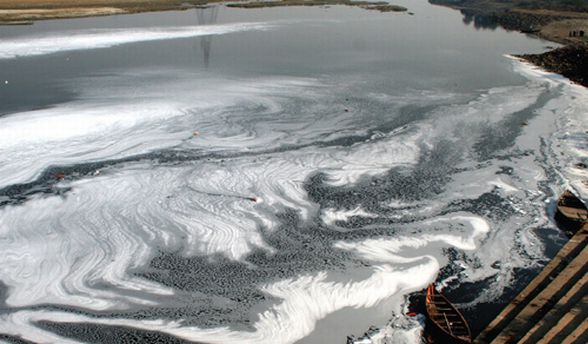
Drying up of ground water aquifers
The drying up of rivers, lakes due to climate change or deterioration water quality of rivers, streams caused by pollution has forced overexploitation of ground water aquifers in India for domestic, agricultural, commercial and industrial purposes. No wonder that India has become the world’s largest extractor of groundwater, accounting for 25 per cent of the total. According to Central Ground Water Board data, as many as 256 out of 700 districts in India have ‘critical’ or ‘over-exploited’ groundwater levels. The contaminated water from sewages, industrial effluents are also entering the groundwater aquifers.
Real Time Monitoring
The Real Time Monitoring (RTM) of water and waste water based on Internet of Things, which enable real time water quality information, has the potential to revolutionize water use optimisation in India. Sewage Treatment Plants (STPs) and Water Treatment Plants (WTPs) monitored by RTMs are getting wide acclaims as a measure to conserve water resources in India as well as ensuring water quality for the users.
Currently, RTM monitored STPs or ETPs are turning out to be economically viable option for the residential, commercial and industrial sector as it helps to produce clean water for non-potable purposes.
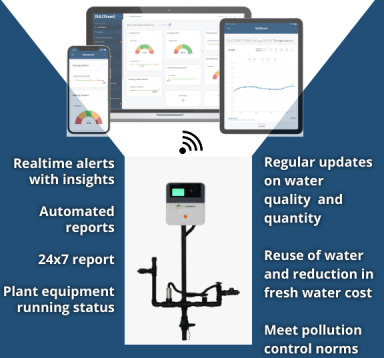
RTM based on Internet of Things
Greenvironmentindia’s IoT based Real Time Monitoring for Water and Wastewater works with the help of sensors fitted in water utilities, Internet of Things (IoT) and cloud-based data management to check and analyse critical quality measuring parameters (e.g., physical, chemical, and microbial) of target water. It can be fresh water, wastewater, recycled water, water bodies etc.
Based on the analytics, automated alerts about the quality of water or recycled water and the pointers to the impending issues of water management or recycling systems, are shared to the users enabling them for right decision making.
In case of fresh water, remedial measures include chlorin dosing and streamlining purification measures such as UV filtration and Reverse Osmosis. Such measures can be taken based on the alerts generated with the help of data fed on water quality.
In case of wastewater treatment plants including STPs and ETPs, based on the data on water quality, alerts are generated, which pinpoints to the efficacy of plant functioning that would help in timely trouble shooting, repairs and maintenance. Regular maintenance helps to identify and resolve minor issues before they become serious and costly.
Scope of Real Time Monitoring
RTM 2.0 monitors important parameters regarding potential water pollutants including inorganic contaminants, organic contaminants, biological contaminants and radiological contaminants, which can lead to a range of health problems among humans.
Inorganic contaminants: include metals such as fluoride, arsenic, lead, copper, chromium, mercury, antimony, cyanide found in water from natural sources or enter water bodies from industrial effluents.
What RTM monitors
• pH
• Total Dissolved Solids – TDS
• Chlorine
• Biochemical Oxygen Demand – BOD
• Chemical Oxygen Demand – COD
• Total Suspended Solids – TSS
• Turbidity
• Oxidation & Reduction Potential – ORP
• Pressure
• Temperature
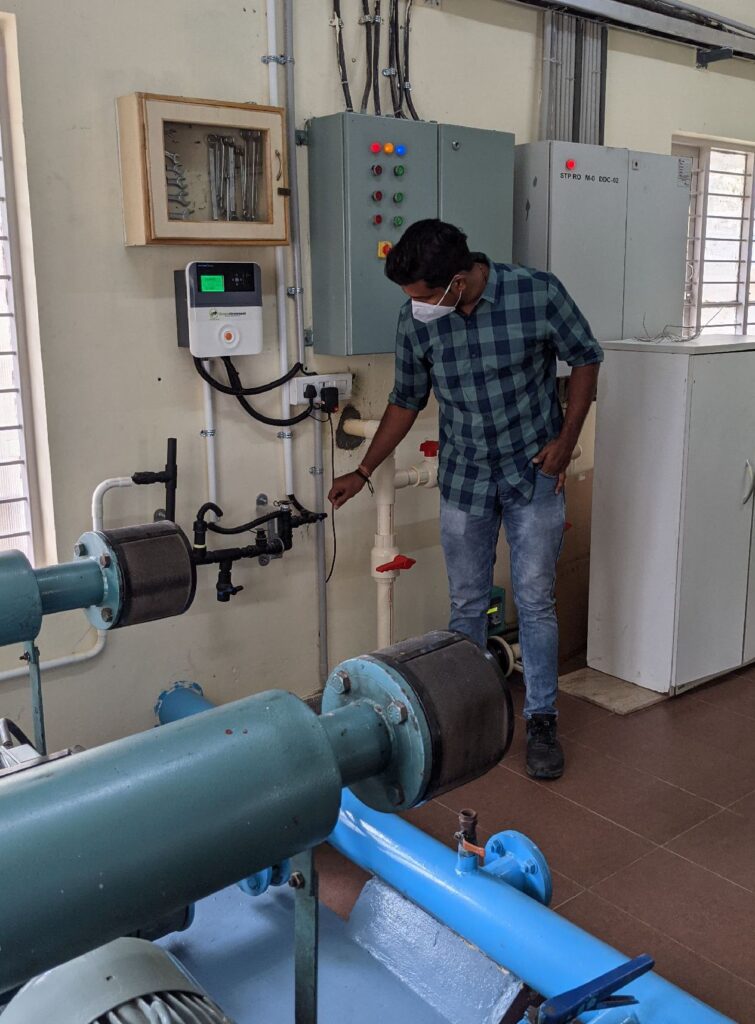
- RTM also helps to detect leakages in the water distribution or wase water management system.
- In case of waterbodies, it provides warning bells about pollution, which may harm human, aquatic and plant lives.
- The advantage of RTM is its automated system which requires very minimal human interventions. It the replaces all the major steps in traditional way of water and wastewater monitoring like sample collection, preservation, transportation, sample pre-treatment, calibration, reagent addition and sample analysis with automated procedures and on-line analyzers.
- Greenvironmentindia’s RTM with automated Chlorine disinfection system responds to requirements of water purification based on alerts from the RTM
RTM also helps the state and non-state authorities responsible for water supply to take appropriate measures to control threat of impurities of water drawn from water bodies.

